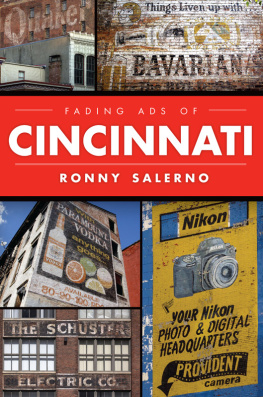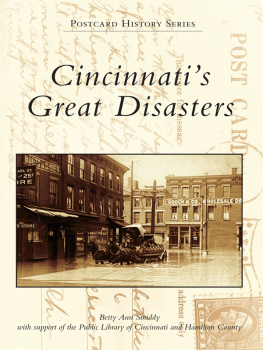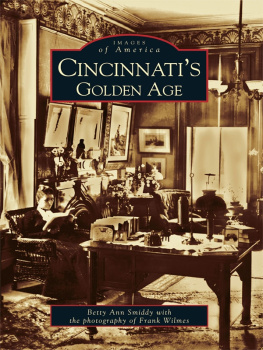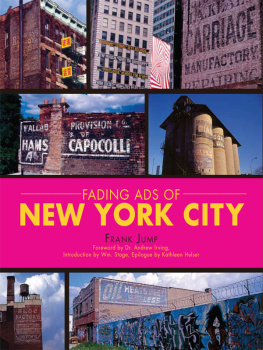


Published by The History Press
Charleston, SC
www.historypress.net
Copyright 2015 by Ronny Salerno
All rights reserved
First published 2015
e-book edition 2015
ISBN 978.1.62585.650.0
Library of Congress Control Number: 2015953041
print edition ISBN 978.1.46711.872.9
Notice: The information in this book is true and complete to the best of our knowledge. It is offered without guarantee on the part of the author or The History Press. The author and The History Press disclaim all liability in connection with the use of this book.
All rights reserved. No part of this book may be reproduced or transmitted in any form whatsoever without prior written permission from the publisher except in the case of brief quotations embodied in critical articles and reviews.
CONTENTS
FOREWORD
An excited sixteen-year-old student once came into my classroom and exclaimed, Last night I snuck into the abandoned water park off 275! Look at the pictures I took! My first instinctbeing an adult in a position of authoritywas to tell him what an idiot he was and how dangerous and illegal his actions were. Then I saw the pictures. Never before had I been forced to open my eyes to this place, now defunct and all but invisible to the urban landscape. How could I have driven past this place dozens of times and not noticed the enormous park? Ronnys photographs had somehow lifted the veil. All I could say was: Do more of this.
This was the start of Ronny Salernos love affair with the fading history of the places where we live, work and play; the history of places and things that are not all that noteworthywater parks, shopping malls, suburbs. You wont find remnants of them in museums or history books. No scholarly articles will be written about them. They, even while alive, were not all that significant. Now dead or dying, they are becoming even more ghost-like, not connected to the visual information of what we allow ourselves to see.
With Fading Ads of Cincinnati, Ronny Salerno has trained his eye to see what is usually imperceptible to the rest of us. How does one train ones self to see the invisiblephantoms of signs that used to let us know what was where, who owned what and what was being advertised? For Ronny Salerno, it started with an honest love for his city. Infatuation is the best word I can think of to describe his love affair with Cincinnati. Like people who travel the world to photograph foreign landscapes or exotic wildlife, Ronny has this same passionexcept he never has to leave home.
Ronny has avidly been exploring and documenting through photography the nuances of Cincinnati since 2007. His worldwide-popular queencitydiscovery.com has been a staple for Cincinnatians for the past eight years. The Future Is One of Mighty Ducks T-Shirts and Discmen was published in 2013. Fading Ads of Cincinnati is only the current chapter in his documentation of our fair city, and we are eagerly awaiting the next.
LAURA METZ
ACKNOWLEDGEMENTS
There are several people who made this book possible. When I started this project, so many lent their advice, insight and kind words of encouragement. Many offered up tips on where I could find several of these signs, and many others took time out of their days to talk with me and share their stories. Id especially like to thank Bill Rinehart, Cameron Knight, John Kiesewetter, Carl Solway, Sue Sena, Adam Dean, Andrew Gould, David Maley, Kevin Holthaus, Bob Carpenter, Tod Swormstedt, Fred Jump, Bill Haas, Ed Gelke, Fred Lemon, Dave Greene, Don Helbig, James Engle, Amy Hartman, Chantel Oliver, Mayor Mark Mallory, Janet Reid, Chris Stegner, Barbara Houghton, Dave Rolfes, Maya Drozdz, Jake Mecklenborg, Laura Metz, Mike Taylor, Andrea Ward, the Evers family, Jeremy Martin, Andrea Brofft, John Vachon, Esther Bubley, Christian Glass, Kylie Seward and Doug Appleall of whom provided help and inspiration. Also, Gus Holthaus, who painted iconic signs and left his signature behind.
Additionally, Im especially thankful to my familyDad, Mom, Nana, Papa, Grandma and Grandpafor helping shape who I am and providing me with the resources to pursue photography and writing. And thank you to Laura, who encouraged me to take on this project and has always been so supportive and understanding of the stories I want to share.
Finally, thank you to Krista Slavicek, whose confidence and leadership gave me the opportunity to create this book and guide its development.
To everyone: I am eternally grateful.
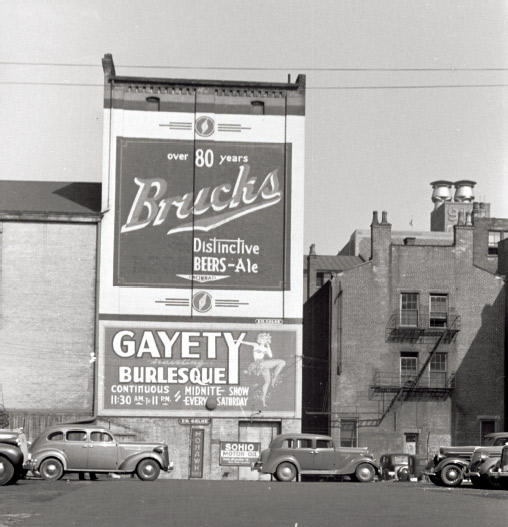
A parking lot scene in October 1938 features vintage automobiles along with painted advertisements for beer and a burlesque show in Cincinnati. When enhanced to its highest resolution, the image reveals the signature of Ed Gelke, whose name can still be found under the Major Savings and Loan sign seen later in this book. Image by John Vachon, courtesy of the Library of Congress.
INTRODUCTION
I think everyone wants to be remembered in some way, to have something to show for their lives. Im also sure everyone has a different opinion on how to go about that. Our time on earth is finite, a small span in the grand scheme of things. Were burdened by our own mortality, and after were gone, theres only the fading physical remnants of our past to remember us by. In a way, what we leave behind is similar to the fading advertisements, or ghost signs, seen in the photographs throughout this text. In their infancy, they are attention-grabbing and meant to catch the view of those around them. Then they age, taking on new forms. Eventually, the companies they advertised go under or evolve into new identities. Sometimes the products they tout are no longer available. Often, the signs just stop being maintained, victims of indifference. Theyre left to live out their lives as lead-based paint clinging to the bricks. In that sense, are they truly dead? Are they truly ghosts of the past? Or are they like our own personal legacies, similar to the memories of ourselves we leave behind? For inanimate objects designed to take advantage of open space and generate interest, they possess surprisingly human qualities.
When people would ask me what kind of book I was working on, I had to be careful using the term ghost sign. Theyd immediately ask me if I had investigated some local urban legend or taken a tour of a supposedly haunted building, offering their suggestions of where I could seek out tales from beyond the grave. Id correct them and show some photographic examples of these signs. Theyd be intrigued, but there was always some disappointment that I wasnt writing about apparitions or curses. I dont believe in ghosts. As such, Ive always struggled with the term ghost signs. I feel the term fading advertisementas coined by author Fred Jump in this series first bookis much more appropriate. Fading is a verb; it implies that theres action. Ghost implies that something is dead, gone. These signs are still alive in a way, even if the products or the people who created them have passed. Theyre in action, physically warring against the distressed nature of the elements. They power on until external forces finally prevent them from doing so, until the last chip of paint has fallen. Essentially, thats the end of their life cycle. In a way, theyre not really ghost signs until theyre gone, remembered only in a book made during the summer of 2015.
Next page
